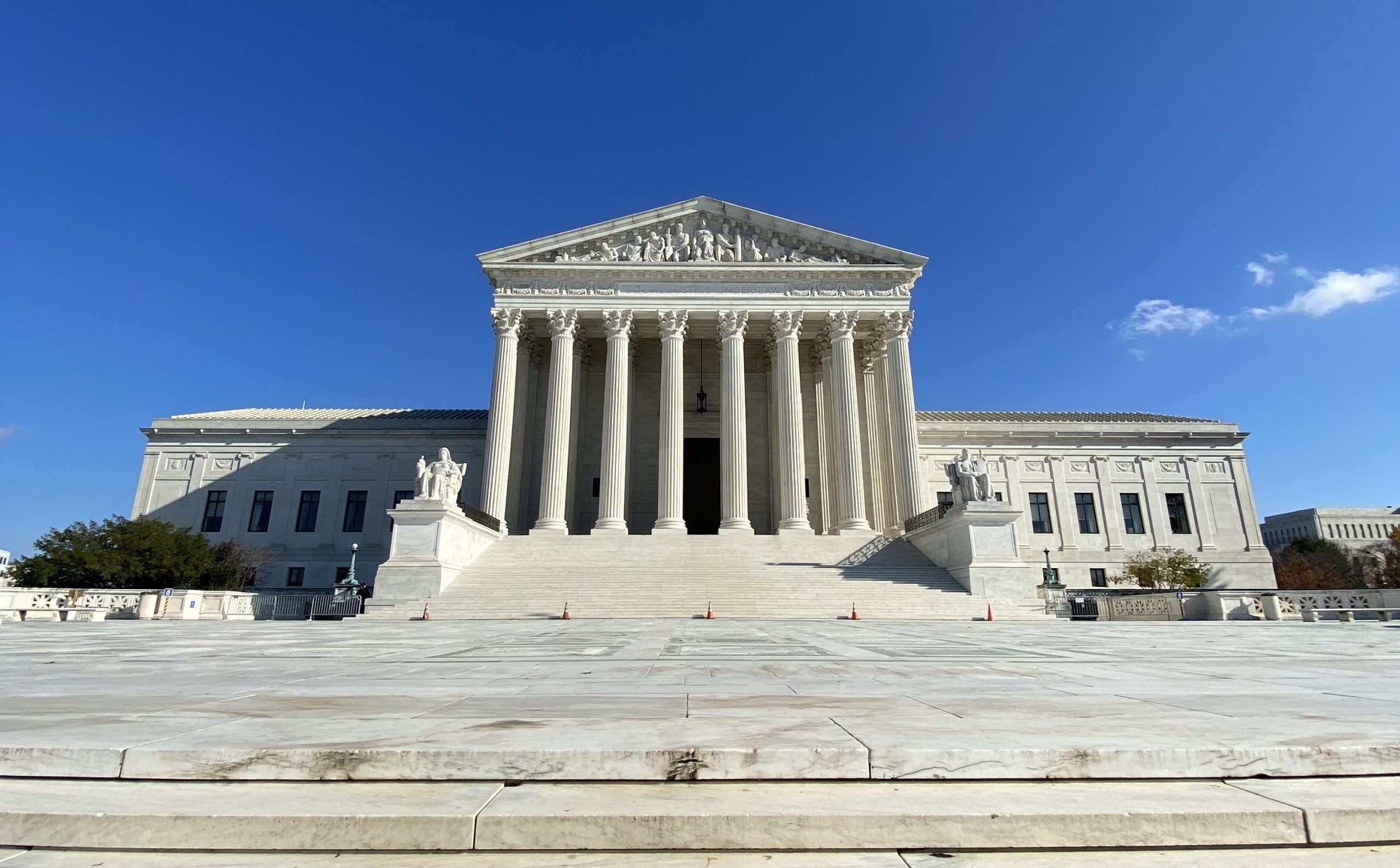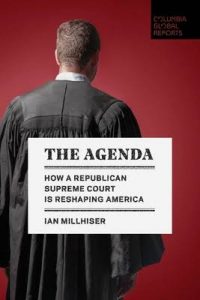An alarmist take on the Supreme Court’s agenda

A review of Ian Millhiser, The Agenda: How a Republican Supreme Court Is Reshaping America (Columbia Global Reports 2021)
In The Agenda: How a Republican Supreme Court Is Reshaping America, Vox senior correspondent Ian Millhiser offers an engaging, accessible and well-informed statement of progressive anxieties about what the Supreme Court’s newly strengthened conservative majority may do. The book is unlikely to change many minds, however, because it betrays the very fault of which it accuses the court: It advances a vision of correct decision-making rooted more in partisan policy preferences than in neutral legal criteria.

Millhiser begins the book by highlighting the Supreme Court’s present-day power and sketching the historical evolution that brought it to this point. Millhiser notes that in the so-called Lochner era of the Gilded Age and early 20th century, the Supreme Court interpreted the Constitution to forbid certain progressive economic and social legislation. But, Millhiser writes, Lochnerism “met its match in President Franklin Delano Roosevelt.” Then, in the famous 1938 Carolene Products decision the Supreme Court “established a strong presumption in favor of democracy — in nearly all cases, the people’s democratically elected representatives should decide the nation’s policy, and not unelected judges.”
Millhiser suggests that things have gone downhill from there. Although conservatives once embraced the Carolene Products principle of judicial restraint, Millhiser argues they have now abandoned it upon gaining control of the judiciary. “The Carolene Products settlement in favor of democracy is now in tatters,” he writes.
Millhiser illustrates this thesis with a whirlwind tour of four key areas: the right to vote, administrative law, religion and the right to sue. In each case, he argues the court has moved in directions favorable to the Republican Party’s agenda and electoral prospects — and that it threatens to move still further in a conservative direction.
At just 113 pages, The Agenda is deliberately and commendably brief, so it is perhaps uncharitable to fault it for insufficient nuance. Nevertheless, a number of its claims struck me as hyperbolic and lacking in context.
To begin with, it is true that the court embraced judicial restraint in Carolene Products, and it is also true that some conservatives on the court appear less committed to judicial restraint today than they once claimed to be. But a lot happened between 1938 and 2021 to make the Supreme Court the powerful institution it is today, and along the way the court (rightly or wrongly) made quite a few controversial liberal decisions overriding democratic choices. Decisions regarding abortion, cruel and unusual punishment, self-incrimination, the establishment clause, and same-sex marriage are salient examples. At this point, progressives’ newfound commitment to judicial restraint looks about as situational as did conservatives’ similar professions in the past.
As powerful as it is, moreover, the Supreme Court is not really “the locus of policymaking in the United States,” as Millhiser argues, nor is he entirely accurate in arguing that the court “spearheaded” “[t]he lion’s share of the legal changes that have occurred over the last decade.” First of all, the 10-year time frame in this statement is artificial: It omits Congress’ remarkable output just over 10 years ago, during President Barack Obama’s first two years in office, when Congress passed the Affordable Care Act and the Dodd-Frank Wall Street Reform and Consumer Protection Act. In addition, even during the past 10 years, Congress has enacted a number of significant laws, including tax reforms and the gargantuan spending bills of the past year and a half. Finally, while it is true, as Millhiser suggests, that political polarization has probably weakened Congress relative to the other branches, the executive branch, not the court, has been the principal beneficiary of that change.
All that said, the Supreme Court today is a remarkably powerful body — too powerful in my view — and the appointment process has become partisan to an unprecedented degree. I also agree with Millhiser that the court has taken some important wrong turns. (For example, I argued beforehand that the court would be wrong to rule as it did in Shelby County v. Holder; I have criticized some aspects of the court’s administrative law jurisprudence; and the obstacles to private litigation and class actions that Millhiser highlights deserve much greater public attention.)
Even so, I am skeptical that the court will alter the law as dramatically as Millhiser fears. Millhiser worries, for example, that by weakening federal voting rights laws and upholding state-level electoral regulations, “[t]he Supreme Court’s 6-3 Republican majority is potentially an existential threat to the Democratic Party’s national ambitions — and, more importantly, to liberal democracy in the United States.”
Time will tell, and recent events have given some cause for alarm, but I suspect the Democratic Party’s future electoral success will depend much more on its policy positions and willingness to run electable candidates than on anything the Supreme Court does. In most areas, furthermore, I suspect the court will pursue incremental rather than radical changes. Across history, the court has normally done just that, and recent threats to add court seats or take other aggressive actions seem likely to encourage restraint.
For that matter, the court has recently issued a number of surprising decisions, on matters ranging from abortion and transgender rights to immigration, criminal procedure, and federal Indian law. It is true that these decisions predated both the 2020 election and the death of Justice Ruth Bader Ginsburg. But they show that the court’s conservative bloc is hardly unified on every issue, and it is possible that some justices besides Chief Justice John Roberts will feel the pull of caution and restraint, much as he did, when it comes time to cast decisive votes for dramatic rulings.
In any event, in my view, determining whether the court’s rulings are illegitimately partisan requires more than observing that the decisions’ results align with partisan preferences; it requires some theory about what rulings would be correct on the merits. Here, on at least some points, the liberal justices’ positions are just mirror images of the conservatives’. For example, Millhiser faults the most conservative justices for rejecting judicial deference to agencies’ views of their own regulations while deferring to the Trump administration’s stated reasons for adding a citizenship question to the census. But to the extent those conclusions are inconsistent, the liberal justices’ contrary views are equally so.
In principle, a pro-democracy constitutionalism — a theory that favors judicial restraint and political resolution of policy conflicts — could provide a way out of this bind. But to provide an appropriate general orientation, such an approach must be applied across the board, and it is not clear to me which way it should cut on all the issues The Agenda addresses. Given that someone must establish electoral procedures and draw district lines, is it more democratic to do so judicially or to keep responsibility principally on state and federal elected representatives? Is it more democratic to allow broad delegations to administrative agencies or to limit them? And should balancing public order and religious liberty be left to the political process, or should courts instead show greater solicitude to even major religions in a country with declining religious observance? The answers to these questions do not strike me as obvious.
Our society’s partisan polarization seems increasingly to structure every debate, from pandemic precautions to school curricula and even pillow choices. Constitutional law is no exception. Indeed, it is an arena where this dynamic is particularly destructive. In my view, the right response is not to presume purity on one side and vice on the other, but instead to favor what I have called “symmetric” understandings: Courts should aim to craft clear rules of the road that can be applied even-handedly across differing issues and contexts. If Millhiser’s anxieties about the court suggest the need for such an approach, so does the equally partisan vision he offers in response.
Posted in Book reviews/Ask the author
